
UNDERSTANDING SCHIZOPHRENIA: R.D. LAING (PART 2 OF 3)
THE GHOST OF THE WEED GARDEN: JULIE, A CHRONIC SCHIZOPHRENIC
R.D. Laing
From R.D. Laing, The Divided Self (Penguin Books, 1990 | Tavistock Publications, 1959) pp. 188-196
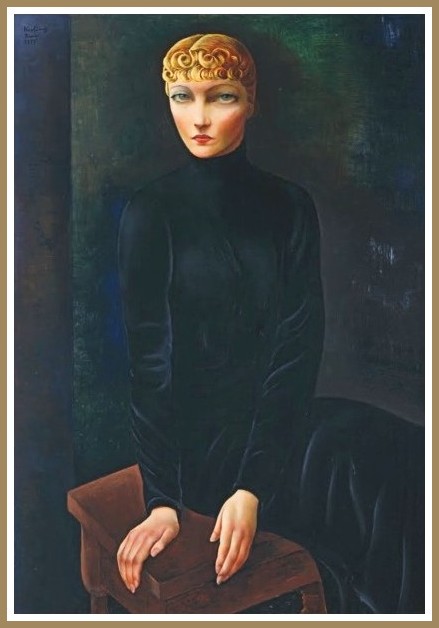
Moïse Kisling, Portrait of Marcelle Chantal, 1935
PHASE II: ‘BAD’
From about fifteen, her behaviour changed, and from being such a ‘good’ girl, she became ‘bad’. At this time also, her mother’s attitude had begun to change towards her. Whereas, previously, she had thought it right and proper that Julie should be with her as much as possible, now she began to urge her to get out more, have friends, go to the pictures and even to dances, and have boy friends. All these things the patient ‘obstinately’ refused to do. Instead, she would sit and do nothing, or wander the streets, never telling her mother when she would be back. She kept her room extravagantly untidy. She continued to cherish a doll which her mother felt she should now have’ grown out of’. We shall have occasion to return to this doll later. Julie’s diatribes against her mother were endless and were always on the same theme: she would accuse her mother of not having wanted her, of not letting her be a person, of never having let her breathe, of having smothered her. She swore like a trooper. Yet to other people she could be charming, when she wanted.
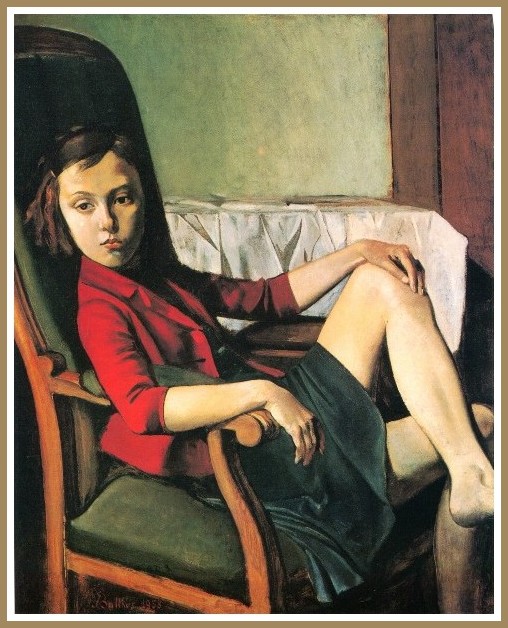
Balthus, Thérèse, 1938
So far we have considered only the relationship of Julie with her mother. But now, before we can go further, we must say a word about the total family constellation. In recent years, the concept of a ‘schizophrenogenic’ mother has been introduced. Fortunately an early ‘witch-hunt’ quality about the concept has begun to fade. This concept can be worked out in various rather different ways, but it can be stated in the following terms: there may be some ways of being a mother that impede rather than facilitate or ‘reinforce’ any genetically determined inborn tendency there may be in the child towards achieving the primary developmental stages of ontological security. Not only the mother but also the total family situation may impede rather than facilitate the child’s capacity to participate in a real shared world, as self-with-other. It is the thesis of this study that schizophrenia is a possible outcome of a more than usual difficulty in being a whole person with the other, and with not sharing a common-sense (i.e. the community sense) way of experiencing oneself in the world. The world of the child, as of the adult, is ‘a unity of the given and the constructed’ (Hegel), a unity for the child of what is mediated to it by the parents, the mother in the first instance, and of what he makes of this. The mother and father greatly simplify the world for the young child, and as his capacity grows to make sense, to inform chaos with pattern, to grasp distinctions and connexions of greater and greater complexity, so, as Buber puts it, he is led out into ‘a feasible world’.
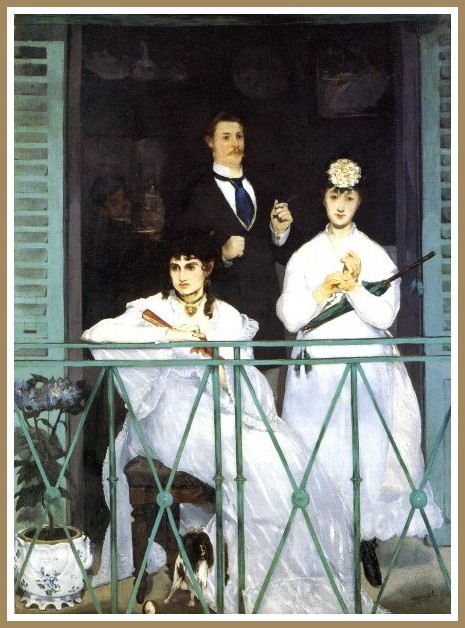
Edouard Manet, Le Balcon, 1869
But what can happen if the mother’s or the family’s scheme of things does not match what the child can live and breathe in? The child then has to develop its own piercing vision and to be able to live by that – as William Blake succeeded in doing, as Rimbaud succeeded in stating, but not in living – or else become mad. It is out of the earliest loving bonds with the mother that the infant develops the beginnings of a being-for-itself. It is in and through these bonds that the mother ‘mediates’ the world to the infant in the first place. The world he is given may be one he can manage to be in; it is possible, on the contrary, that what he is given is just not feasible for him at the time. Yet, despite the importance of the first year of life, the nature of the milieu in which the child has to exist throughout its infancy, childhood, and adolescence may still have great effect one way or the other. It is at these subsequent stages that the father or other significant adults may play a decisive role in the child’s life, either in direct relation with the child or; indirectly, through effects on the mother.
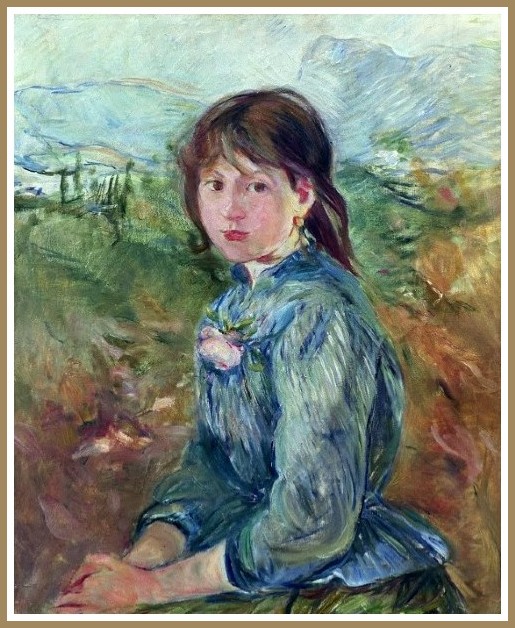
Berthe Morisot, La petite niçoise, 1889
Julie’s sister, three years older, was a rather forthright, assertive married woman, not, however, without femininity and charm. According to her mother, she had been ‘difficult’ from birth: demanding and always ‘a trouble’. In short, she seems to have been a relatively ‘normal’ child of whom her mother never very much approved. But they appeared to get on well enough together. The sister regarded her mother as a rather dominating person if one did not stand up to her. But ‘she’s done everything for Julie, and Julie was always her favourite’. It was quite clear that this sister had early on achieved integral autonomous status. If one cared to look closely into her personality, there were many neurotic elements to be found in her, but there seemed little doubt that at least she had achieved the primary ontological status that Julie had never reached. When she was a child, she had friends of her own age, just too old for Julie, and Julie did not appear to have come close to her. Julie, however, had built into her scheme of phantoms a big sister who was one of the few predominantly good figures in her ‘world’, ‘a Sister of Mercy’.
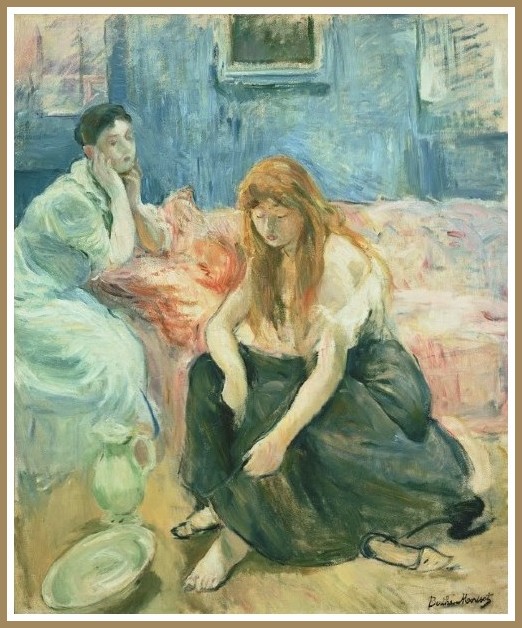
Berthe Morisot, Deux jeunes filles, 1894
The father had a more obviously significant part to play. In her mother’s eyes, he was a ‘sexual beast’. In his, her mother was cold and unsympathetic. They spoke to each other no more than was absolutely necessary. He found sexual satisfaction elsewhere. However, although they had many accusations to make against each other, neither built into these accusations any allegations about mistreating their daughter. The father, indeed, as he said, had not much to tell me, because he had ‘withdrawn himself emotionally’ from the family before Julie was born.
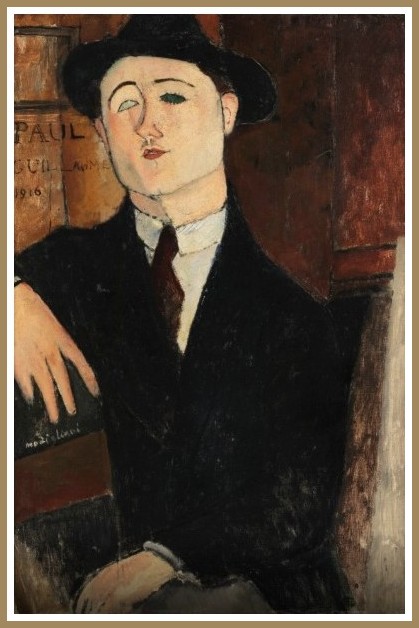
Modigliani, Portrait of Paul Guillaume, 1916
The patient’s sister told me two incidents, both of which must have been of very great importance to Julie. The first her mother probably did not know about; the second she could not bring herself to tell me of. We shall return to the second incident later. The first occurred when Julie was fourteen or fifteen. Despite her father’s distance from her and his relative inaccessibility, Julie had seemed fond of him. He occasionally took her for a walk. On one occasion Julie came home from such a walk in tears. She never told her mother what had happened. Her mother mentioned this to me to say that she was sure that something awful had taken place between Julie and her husband but she had never discovered what. After this, Julie would have nothing to do with her father. She had, however, confided to her sister at the time that her father had taken her into a call-box and she had overheard a ‘horrible’ conversation between him and his mistress.
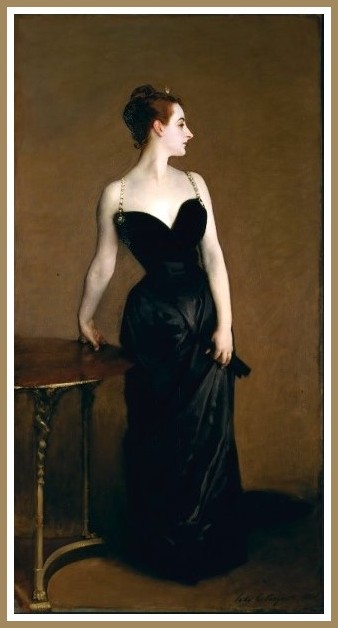
John Singer Sargent, Madame X, 1884
Mrs X did not hesitate to miscall her husband to her daughters, and in piling up innumerable instances of injustices she tried to get them on her side. However, the elder sister took a middle way, and Julie apparently would never openly collude with her mother against her father: after the telephone-box incident, she simply cut herself off from him but would not supply the information for grist to her mother’s mill. The father, however, had, as he said, withdrawn himself from the family. He did not make accusations against his wife to his daughters, since he did not need their support against her. Although he regarded her as a useless wife, ‘To be fair to her,’ as he put it, ‘she was a good mother. I have to grant her that.’ The elder sister saw faults on both sides but tried as far as possible to be reasonable and balanced, and not to take one side more than another.
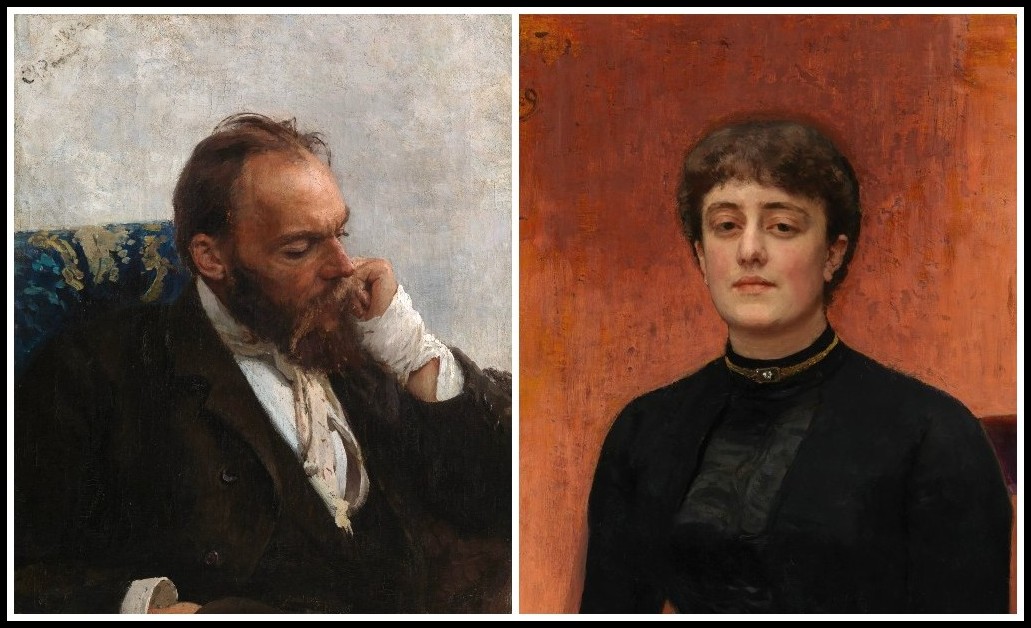
ILYA REPIN
Portrait of Professor Ivanov, 1822 | Portrait of Jelizaveta Zvantseva, 1889
But if she had to, she took her mother’s side against her father, and her mother’s side against Julie. In this latter respect, it was not unreasonable that she should do so. Julie’s accusations against her mother were, from a matter-of-fact, common-sense point of view, wild and phantastic from the first. They must have sounded from the start rather mad. To ‘rant and rave’ about being smothered and not being allowed to live and be a person seemed to this ordinary common-sense family to make no sense at all. She said her mother had never wanted her, and yet she was the favourite; her mother had done everything for her and given her everything. She said her mother was smothering her, and yet her mother was urging her to grow up. She said her mother did not want her to become a person, and yet her mother was urging her to make friends, go to dances, etc.
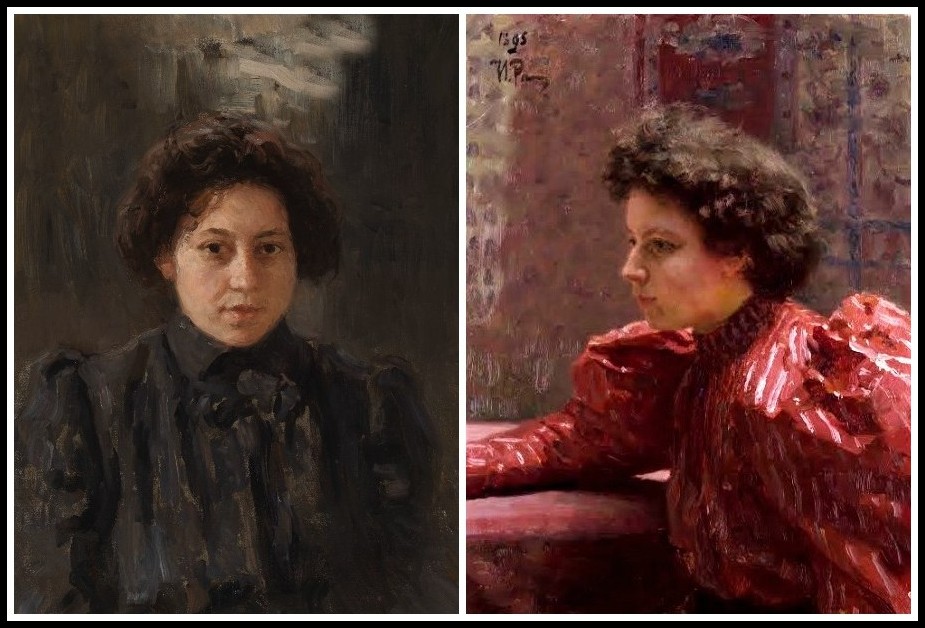
ILYA REPIN
The Artist’s Daughter Nadezhda, 1898 | Portrait of a Daughter, 1895
It is remarkable that, despite the radical disruption of the relationship between husband and wife, in one respect at least they maintained a collusion. Both accepted the patient’s false self as good and rejected every other aspect of her as bad. But in the ‘bad’ phase, a corollary to this was perhaps even more important. Not only did they reject as bad all of Julie apart from the compliant lifeless shadow which passed in their eyes for a real person, they completely refused to ‘take to heart’ any of the reproaches that Julie had against them.
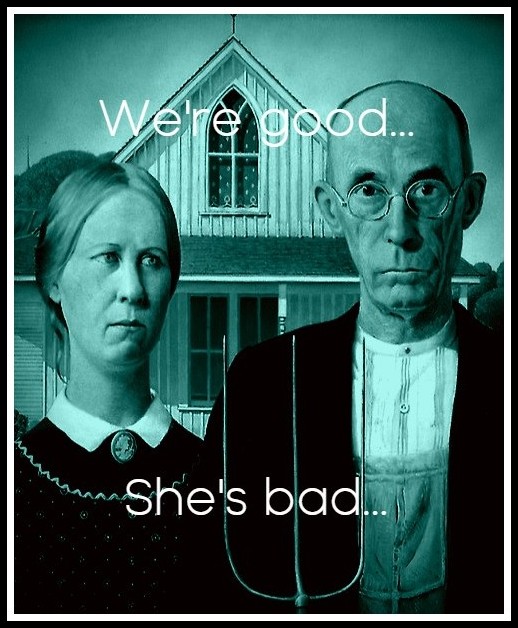
Grant Wood, American Gothic, 1930 (filtered)
Julie and her mother were at this time both desperate people. Julie in her psychosis called herself Mrs Taylor. What does this mean? It means ‘l’m tailor-made’. ‘I’m a tailored maid; I was made, fed, clothed, and tailored.’ Such statements are psychotic, not because they may not be ‘true’ but because they are cryptic: they are often quite impossible to fathom without the patient decoding them for us. Yet even as a psychotic statement this seems a very cogent point of view and it gives in a nutshell the gist of the reproaches she was making against her mother when she was fifteen and sixteen. This ‘ranting and raving’ was her ‘badness’. What I feel must have been the most schizophrenogenic factor of this time was not simply Julie’s attack on her mother, or even her mother’s counter-attack, but the complete absence of anyone in her world who could or would see some sense in her point of view, whether it was right or wrong. For various reasons, neither her father nor her sister could see that there was any validity in Julie’s side of the argument. She was not fighting to win an argument, but to preserve her existence: in a way, Julie was not simply trying to preserve her existence, she was trying to achieve existence.
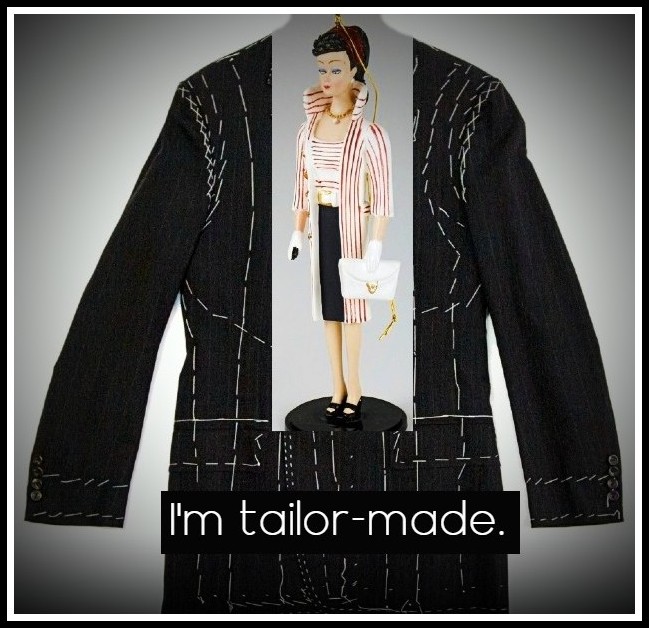
‘The compliant lifeless shadow which passed in their eyes for a real person.’
We can see, I think, that by fifteen or sixteen, Julie could hardly have developed what one might call ‘the ability of common sense’. The common family sense accorded ‘her’ no existence. Her mother had to be right, totally right. When her mother said she was bad, Julie felt this as murder. It was the negation of any autonomous point of view on her part. Her mother was prepared to accept a compliant, false self, to love this shadow, and to give it anything. She even tried to order this shadow to act as though it were a person. But she had never recognized the real disturbing presence in the world of a daughter with her own possibilities. The existential truth in Julie’s delusions was that her own true possibilities were being smothered, strangled, murdered. To exist, to be able to breathe, Julie felt that her mother had to admit that she could have been wrong about some things, that she could have made mistakes, that there was a sense in which what her daughter said could be right and have weight. Putting it in one way, one might say that Julie needed to be allowed to project some of her bad-self into her mother, and to be allowed to take some goodness out of her mother, not merely to be given it all the time.
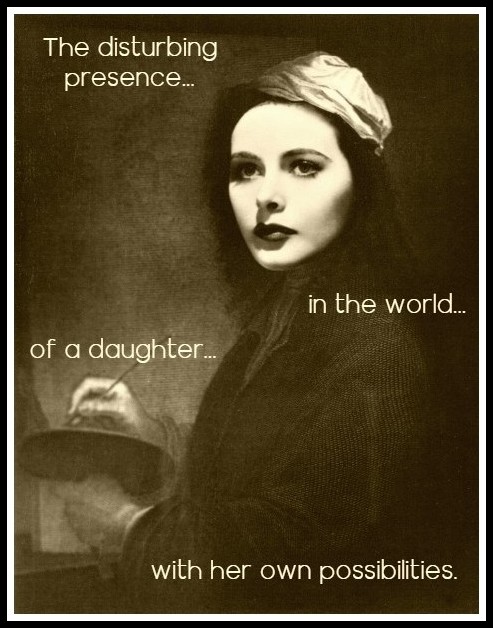
Joseph Cornell, Photomontage, 1941 (filtered)
But, to the whole family, Julie was trying to prove white was black. Reality did not yield. She began to convert existential truth into physical facts. She became deluded. If she began by accusing her mother of never having let her live, in an existential sense, she ended by talking and acting more than half as though her mother had, in a legal sense, actually murdered an actual child, and it was quite clearly a relief to the family when they could then pity her and no longer have to vindicate themselves by condemning her. Only her father, in a curious way, treated her as a responsible person. He never admitted that she was mad. To him she was wicked. He was not ‘taken in’ by her game. It was all an expression of spite and ingratitude. He regarded what we called her catatonic negativism as sheer ‘thrawnness’ [‘perversity’, ‘twistedness’], her hebephrenic symptoms as vindictive silliness. He was the only one of the family who did not pity her. On some of his occasional visits, he was known to have shaken and pinched her and twisted her arm to get her to ‘stop it’.
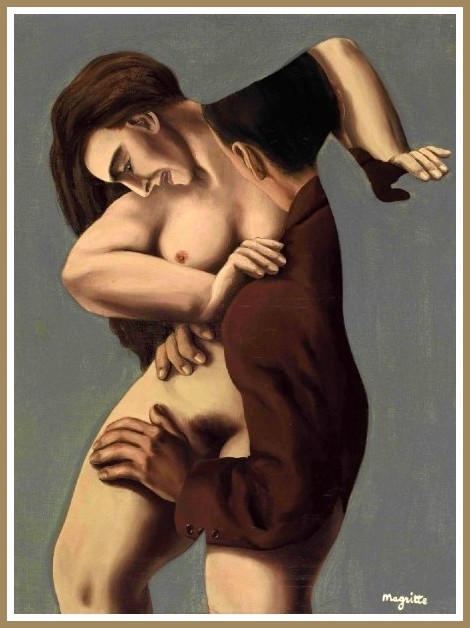
René Magritte, Les jours gigantesques, 1928
PHASE III: ‘MAD’
Julie’s basic accusation was that her mother was trying to kill her. When she was seventeen, an incident occurred that was probably the efficient cause in the transition from being bad to being mad. This is the second circumstance told me by the sister. Until the age of seventeen, Julie had a doll. She had had this doll from infancy: she dressed and clothed it, played with it in her room, no one knew quite in what way. It was a secret enclave in her life. She called it Julie Doll. Her mother became more and more insistent that she should give up this doll, because she was a big girl now. One day the doll was gone. It was never known whether Julie had thrown it out, or whether her mother had put it away. Julie accused her mother. Her mother denied that she had done anything to the doll and said that Julie must have lost it herself. It was shortly after this that Julie was told by a voice that a child wearing her clothes had been beaten to a pulp by her mother, and she proposed to go to the police to report this crime.
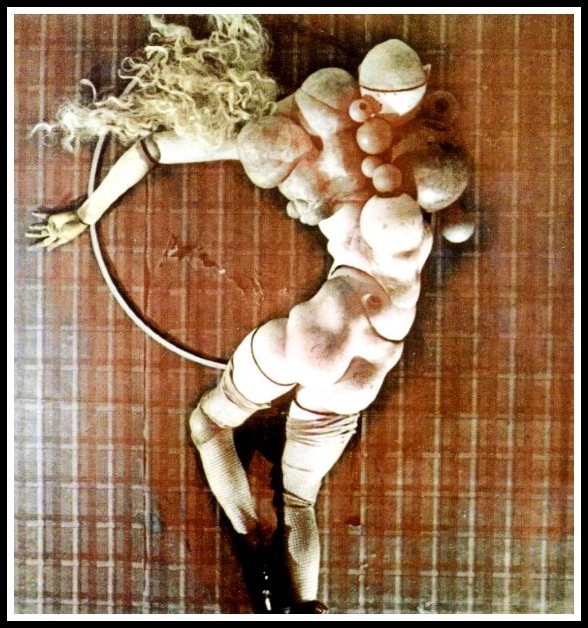
Hans Bellmer, The Doll, 1935
I said that either Julie or her mother disposed of the doll because it seems highly probable that at this stage her ‘mother’ for Julie was already more an archetypal destroyer than her real mother outside. When Julie said that her ‘mother’ killed the doll, it is quite possible that ‘she’ did so, that is, that her ‘internal’ mother had done so. However it happened, in fact the action was catastrophic; for Julie was evidently closely identified with the doll. In her play with the doll, the doll was herself and she was its mother. Now it is possible that in her play she became more and more the bad mother who finally killed the doll. We shall see later that in her psychosis the ‘bad’ mother acted out and spoke through her a good deal. If the doll had been destroyed by her actual mother, who had admitted it, the event might even have been less catastrophic. Julie’s shreds of sanity at this stage depended on the possibility of being able to lodge some bad in her actual mother. The impossibility of doing this, in a sane way, was one of the factors that contributed to a schizophrenic psychosis.
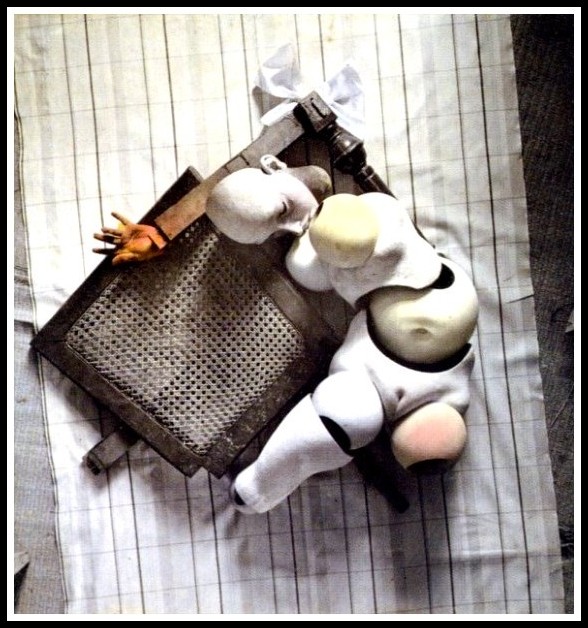
Hans Bellmer, The Doll, 1935
Julie’s self-being had become so fragmented that she could best be described as living a death-in-life existence in a state approaching chaotic nonentity. In her case, the chaos and lack of being an identity were not complete. But in being with her one had for long periods that uncanny feeling of being in the presence of another human being and yet feeling that there was no one there. Even when one felt that what was being said was an expression of someone, the fragment of a self behind the words or actions was not Julie. There might be someone addressing us, but in listening to a schizophrenic, it is very difficult to know ‘who’ is talking, and it is just as difficult to know ‘whom’ one is addressing. In listening to Julie, it was often as though one were doing group psychotherapy with the one patient. I was confronted with a babble or jumble of quite disparate attitudes, feelings, expressions of impulse. The patient’s intonations, gestures, mannerisms, changed their character from moment to moment. One may begin to recognize patches of speech, or fragments of behaviour cropping up at different times, which seem to belong together by reason of similarities of the intonation, the vocabulary, syntax, the preoccupations in the utterance, or to cohere as behaviour by reason of certain stereotyped gestures or mannerisms. It seemed therefore that one was in the presence of various fragments of different ‘personalities’ in operation at the one time. Her ‘word-salad’ seemed to be the result of a number of quasi-autonomous partial systems striving to give expression to themselves out of the same mouth at the same time.
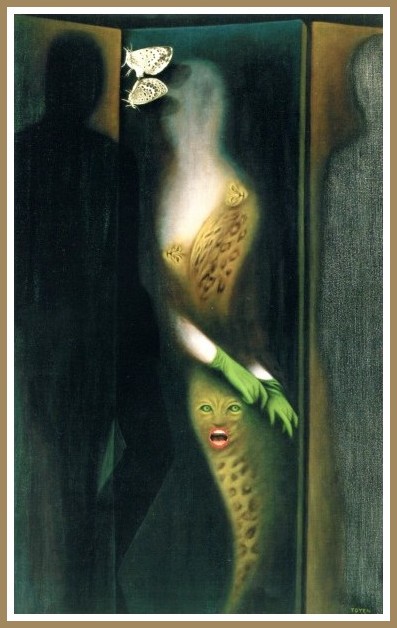
Toyen (Marie Čermínová), Screen, 1966
This impression is strengthened, though hardly made the less confusing, by the fact that Julie seemed to speak of herself in the first, second, or third person. One requires an intimate knowledge of the individual patient before one can be in a position to say anything about the significance of this (this is true in all other aspects of schizophrenic activity). Janet has differentiated dissociation or splitting into molar splits and molecular splits. The hysterical split personality is a molar split. Schizophrenia consists of molecular splitting. In Julie’s case, there seemed to be both. The overall unity of her being had broken up into several ‘partial assemblies’ or ‘partial systems’ (quasi-autonomous ‘complexes’, ‘inner objects’), each of which had its own little stereotyped ‘personality’ (molar splitting). In addition, any actual sequence of behaviour was fragmented in a much more minute manner (molecular splitting). Even the integrity of words, for instance, would be disrupted.
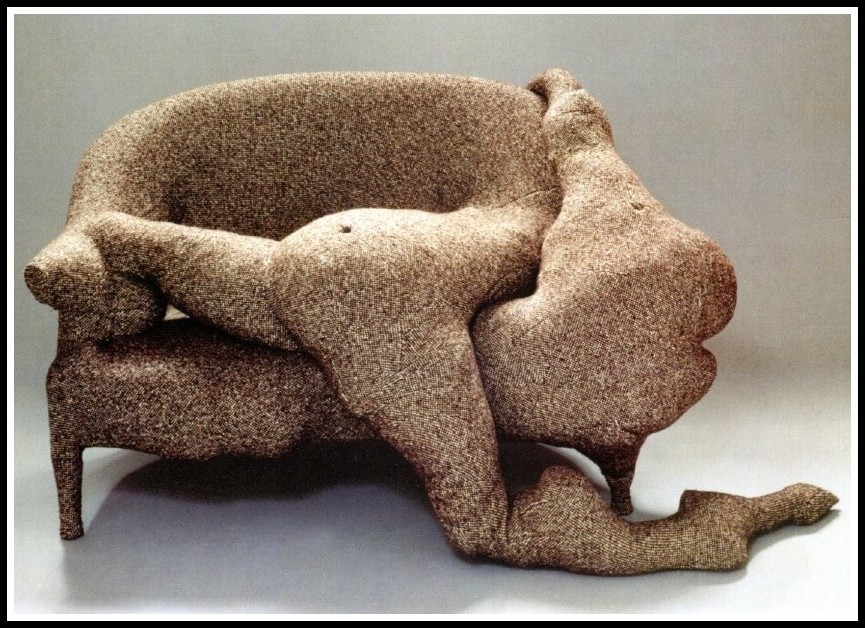
Dorothea Tanning, Rainy-Day Canapé, 1970
MARA, MARIETTA: A LOVE STORY IN 77 BEDROOMS
A literary novel by Richard Jonathan
In this novel, schizophrenia figures in the characterization of the hero, Sprague. R.D. Laing subtends the description.
By Richard Jonathan | © Mara Marietta Culture Blog, 2021| All rights reserved

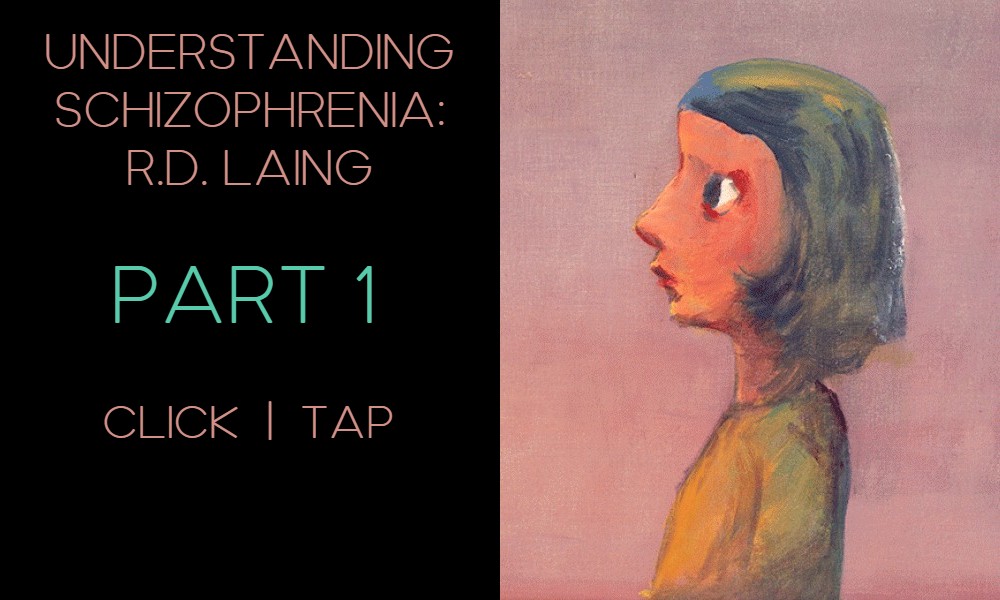
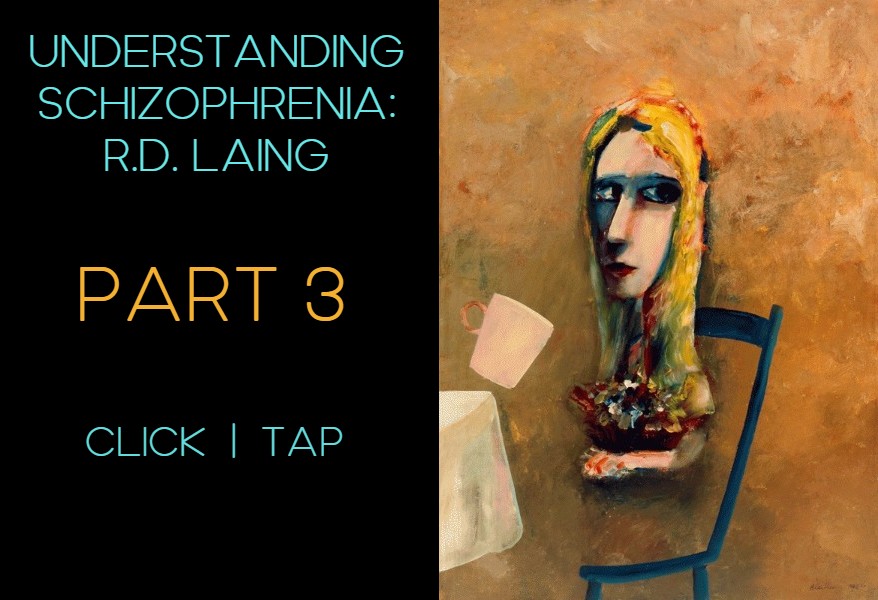
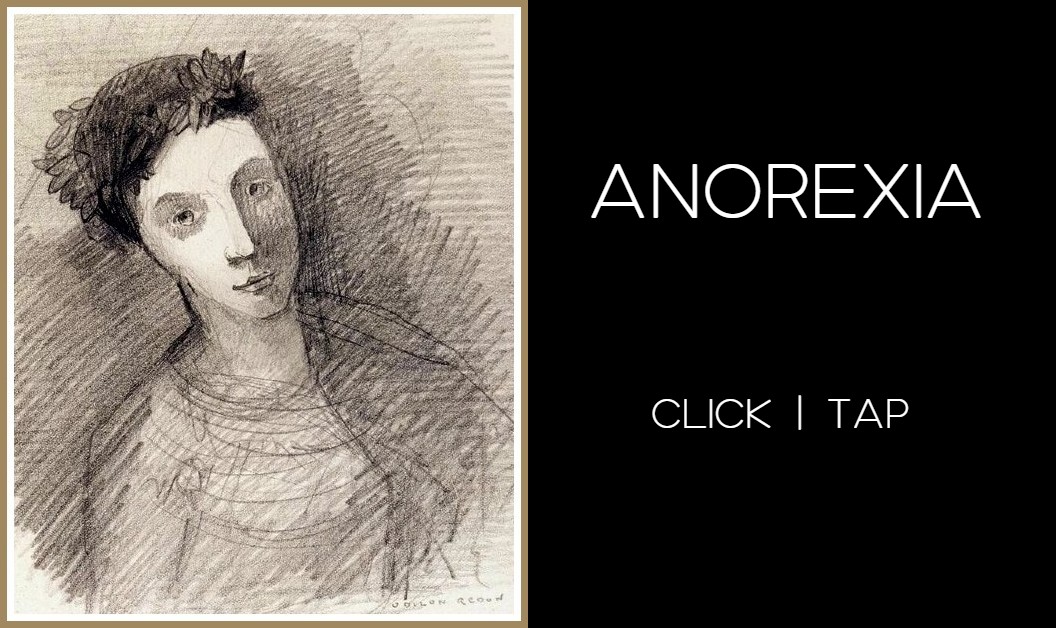
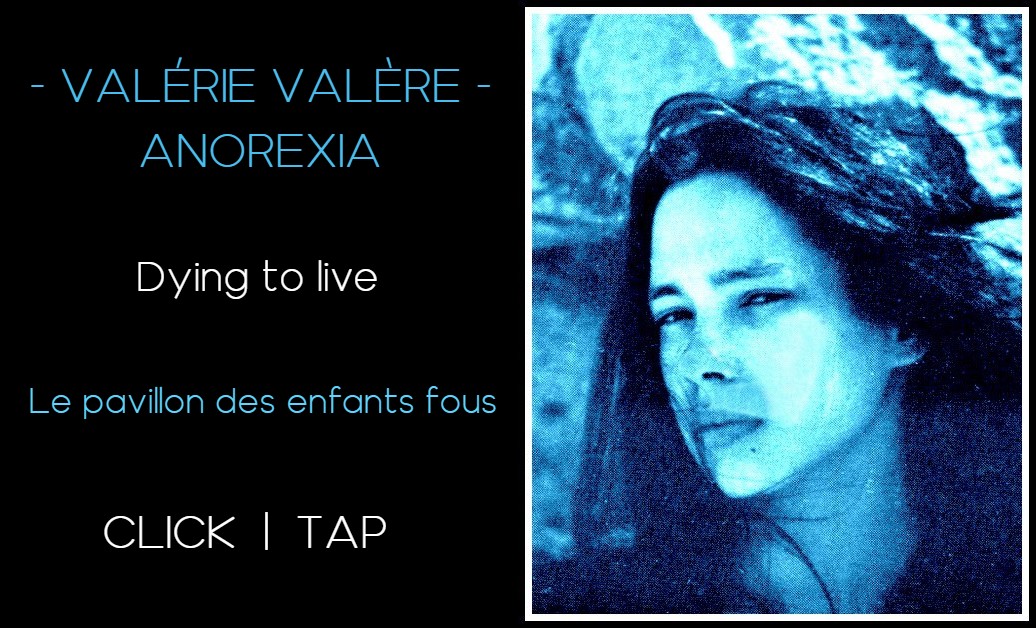
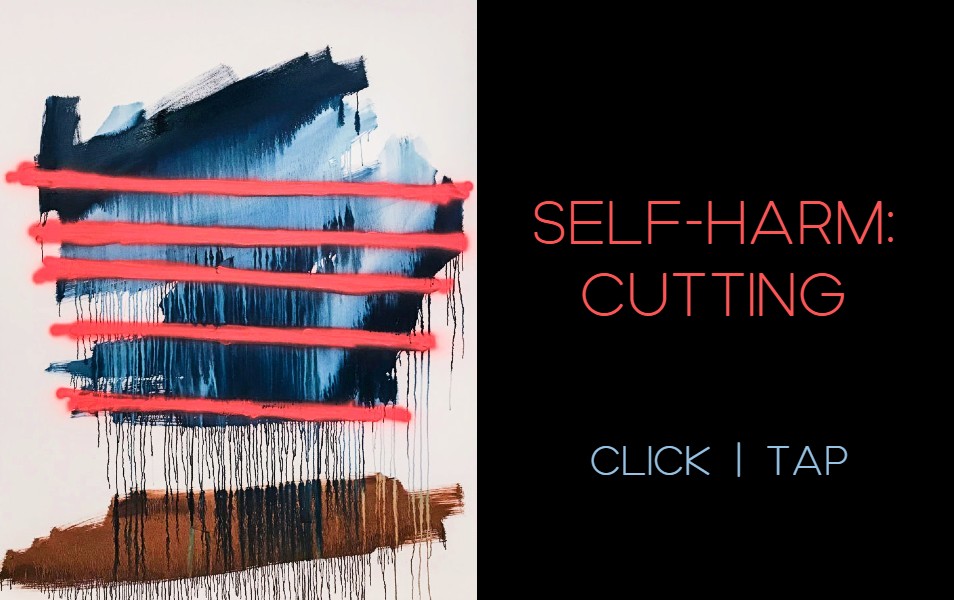
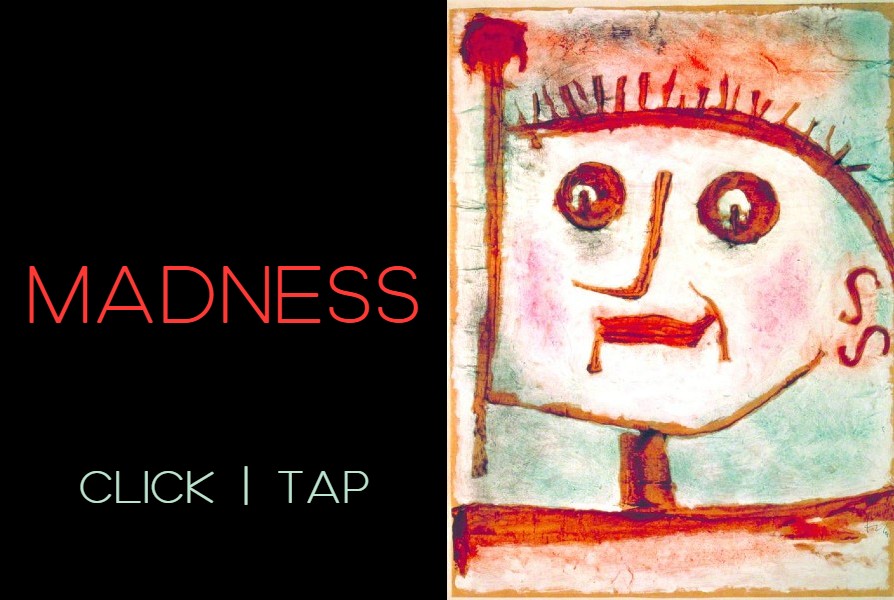
Comments